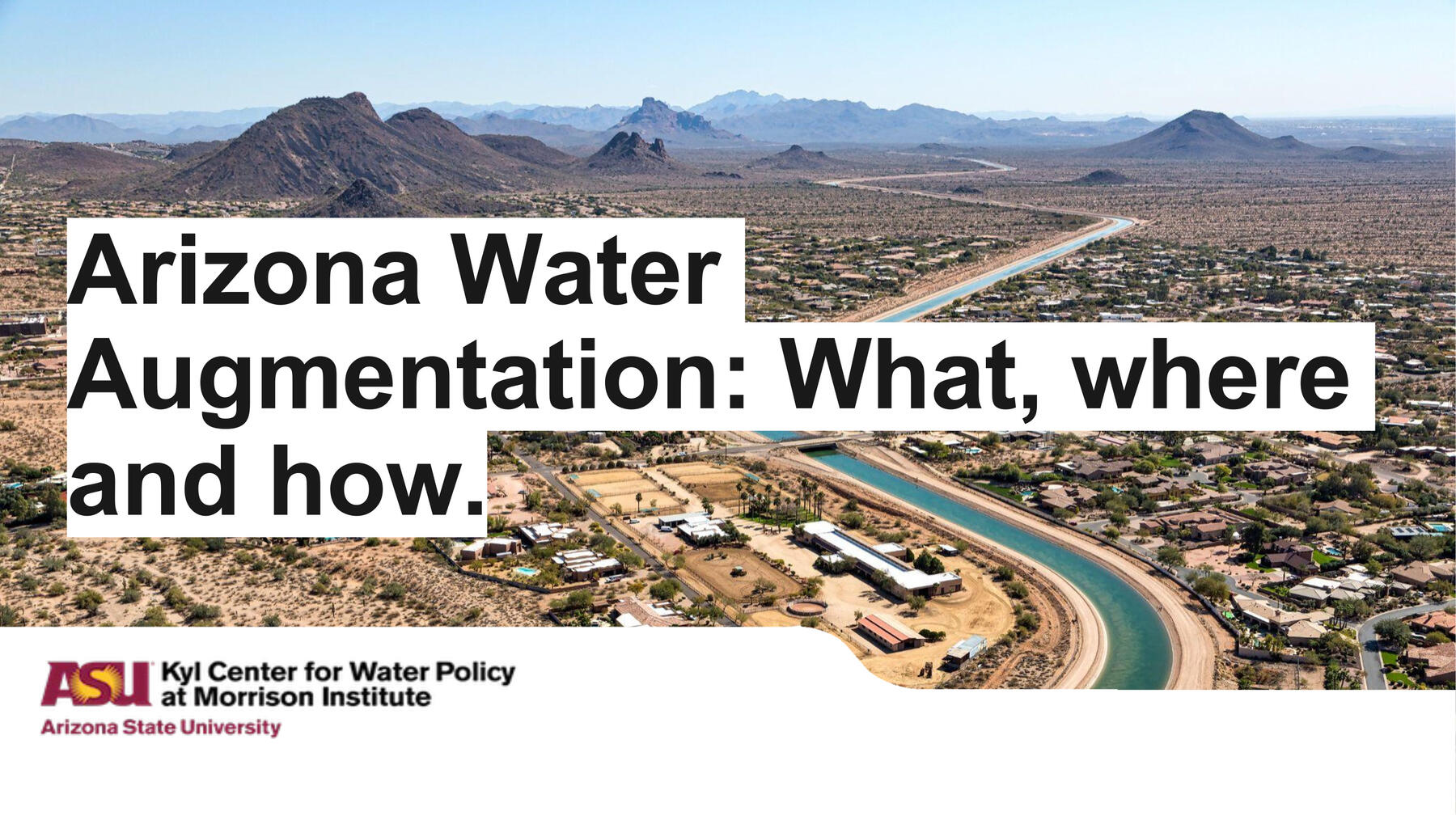
Arizona Water Augmentation - Part 2: Is Water Augmentation Needed?
Part 2: Is Water Augmentation Needed?
As used in this series, water augmentation refers to the effort to secure additional water supplies for current or future users. Development of water supplies has been a human undertaking since time immemorial, and it will likely continue in Arizona to ensure water for future demand.
Here are some examples of different types of augmentation projects that have happened in Arizona in the past:
- To grow crops and support their villages, the ancient Hohokam Indians diverted the flows of the Salt River into man-made canals that moved the river water across vast distances to irrigate up to 110,000 acres.
- In more modern times, the federal government built Roosevelt Dam to capture the flows of the Salt River for flood relief and to deliver water to agricultural users in the Valley of the Sun who pledged their land as collateral to repay the federal government. As the agricultural land urbanized, this water supply transitioned to the cities and towns that serve municipal and industrial uses on that land.
- The cities of Glendale, Mesa, Phoenix, Scottsdale and Tempe reclaim wastewater at the 91st Avenue Wastewater Treatment Plant so that it can be reused, currently by local agriculture and for power production at the Palo Verde Generating Station.
- The federal government built the Central Arizona Project to import Colorado River water into central Arizona for use by farms, industry, tribes and municipalities.
- The City of Flagstaff purchased Red Gap Ranch so that it can pump groundwater from beneath the ranch and pipe it into the city to ensure reliable water supplies for its customers.
- The federal government purchased rights to Colorado River water from the Yuma-Mesa Irrigation and Drainage District in Western Arizona to provide a water supply for the Ak-Chin Indian Community in Central Arizona.
Today, there is much interest in new augmentation efforts because of shortages on the Colorado River and depletion of finite groundwater supplies. It is clear that augmentation will be necessary in some communities in order for their economies and populations to grow on renewable water resources.
- In some parts of Central Arizona, hydrological modeling shows that the available groundwater is spoken for, and the State of Arizona has determined that new growth will need to find imported non-groundwater supplies.[1]
- The City of Buckeye and the Town of Queen Creek Queen Creek have acquired lands in the Harquahala groundwater basin west of the Valley for the purposes of transporting groundwater pumped from underneath those lands.[2] (The Harquahala is one of three Arizona groundwater basins from which raw groundwater may be legally exported.)
- Queen Creek has also purchased a Colorado River water entitlement from landowners along the Colorado River.[3]
- The U.S. Bureau of Reclamation and SRP are working with a cities and others on a plan to enlarge Bartlett Dam on the Verde River to create an additional water supply for Central Arizona.[4]
In several areas of rural Arizona, augmentation has become a topic of discussion because the influx of large-scale farming is drying domestic wells and worrying municipalities about the long-term reliability of local groundwater supplies.
There is a continually evolving need to move water, change its use, alter its quality or store it—this should be no surprise to anyone. However, these efforts invariably involve tradeoffs that involve political, financial, technological, cultural and institutional difficulties. Not all water augmentation efforts will be able to overcome these barriers, and difficult choices about resulting implications for growth and industry will be necessary.
In the next installments in this series, we will discuss how augmentation projects are funded, some of the options for water supply augmentation, and the main obstacles to making augmentation projects happen.
[1] For additional information about Phoenix area groundwater supplies, see Kyl Center for Water Policy, New Phoenix AMA Model Shows Limits of Groundwater as an Assured Water Supply (June 2023).
[2] Joanna Allhands, “Central Arizona Cities may soon have a new water source: Farmland west of Phoenix,” The Arizona Republic (April 10, 2023).
[3] Maritza Dominguez, “Queen Creek begins receiving Colorado River water transfer,” The Arizona Republic (July 21, 2023). Mohave County and other plaintiffs have brought a lawsuit challenging the water right transfer.
[4] The Kyl Center’s Augmentation Concepts story map contains details of the Bartlett Dam expansion proposal and other proposals for bringing new water supplies to Arizona communities.
This blog series is co-sponsored by the Arizona Water Innovation Initiative, a multi-year partnership with the state led by Arizona State University’s Julie Ann Wrigley Global Futures Laboratory in collaboration with the Ira A. Fulton Schools of Engineering.